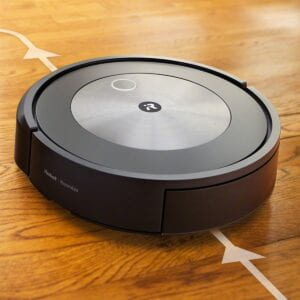Mobile Platforms: Inspiration to Implementation – Chapter 6: Mechanics
This is Roomba, a commercial floor-mopping robot with two universal wheels at the bottom of it, making it possible to wander around the room to do the cleaning work. According to the reading, its structure of it is similar to Figure 6.20, the Rug Warrior I. Because it is using the traditional wheel arrangement, it cannot handle complicated terrain, which means it’s only capable of moving on a flat plain.

This is the robot arm, which has a solid, unmovable pedestal, but is able to cover a wide range of working areas because each joint on its arm can rotate and move freely.

It cannot be categorized according to the book’s definition because it’s designed for a completely different reason, for saving labor costs. I think all of those robots, which are designed for the usage of taking the place of some organs, or some functions that can be carried out by a human, can be classified as a new category of “perception extension”. Though they move in a way similar to our bodies, they are stronger and can easily accomplish things that we cannot do. So, similar to the transhumanism supporters, I regard it as an extension of our perception.

